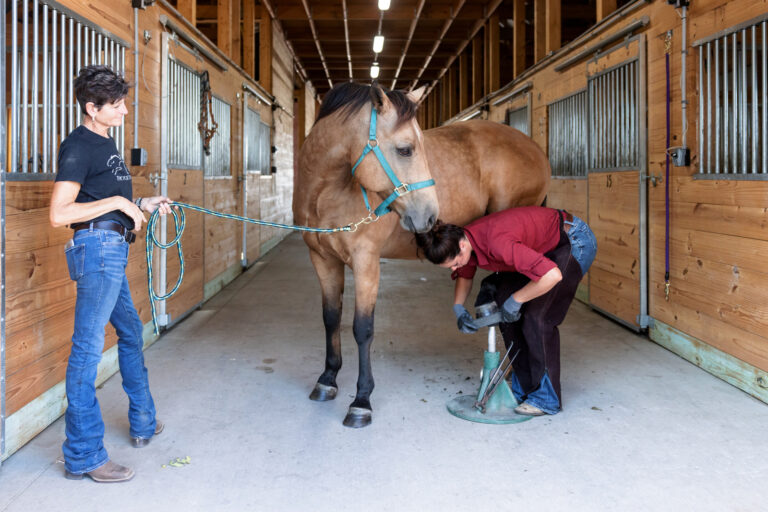
Triage is the process doctors use to prioritize patients according to their need for emergency care. Because of the porous boundaries that often exist between horse owners and equine veterinarians, doctors might receive calls and text messages at all hours of the night, some of which are simply routine requests, such as for nonemergent appointments clients don’t want to forget. Veterinarians cannot turn off their phones when they are on call, and these messages can make it impossible to relax. This is where a triage system can help.
Hire an LVT to Answer After-Hours Calls
Some practices pay licensed veterinary technicians (LVT) to sort through after-hours calls and determine which ones require a prompt response from the veterinarian on call. While many LVTs prefer to work on animals in person, some are eager to earn additional wages or need to work remotely. Utilizing technicians for this task is beneficial for everyone—the LVT gets to fully use their education, the doctor gets to rest, and clients get their requests logged without guilt that they are burdening the veterinarian. If the LVT also works at the practice, they will generally know many of the clients. Many practice owners are more comfortable appointing someone they know and trust to fill this role rather than hiring a commercial triage business.
Subscribe to an Emergency Triage Service
Some triage services charge a monthly subscription fee to practices, with no fee to clients. One doctor who lives in a rural area where she is the only large animal veterinarian for a large radius said she received nearly 90 calls in a single weekend, with only three of them actually requiring immediate professional attention. Because she subscribes to a commercial service that triages her calls, she only engaged with those three cases after hours. She learned of the other inquiries, many of which came from nonclients, on Monday morning. This option can add an expense to the practice budget but is often worth the cost.
Other triage companies charge the animal owner but might offer unlimited conversations until the practice resumes responsibility for emergencies. Some of these businesses employ veterinary technicians, and others employ veterinarians. However, compensation for these triage veterinarians is often low.
If you decide to try a triage arrangement, it is important for the service you use to understand your policies and procedures, such as whether you provide emergency services to nonclients and require payment at time of service. You should also tell the service if you prefer to see most cases or want to limit your in-person visits to certain parameters. For example, veterinarians in areas that see tick-borne diseases with high fevers probably want to see these horses in a timely manner, and the triage service should be familiar with your regional emergency types.
Final Thoughts
Accomplishing an effective triage arrangement for your practice’s emergency calls can be incredibly helpful in minimizing the veterinarian’s stress and mental load. If you are interested in trying this solution, explore the options that are available.
Related Reading
- Equine Veterinary Sustainability: Daytime Emergency Policies
- Equine Veterinary Sustainability: 10 Steps to Starting a Successful Emergency Co-Op
- Ethics of Emergency Care in Equine Practice
Stay in the know! Sign up for EquiManagement’s FREE weekly newsletters to get the latest equine research, disease alerts, and vet practice updates delivered straight to your inbox.




